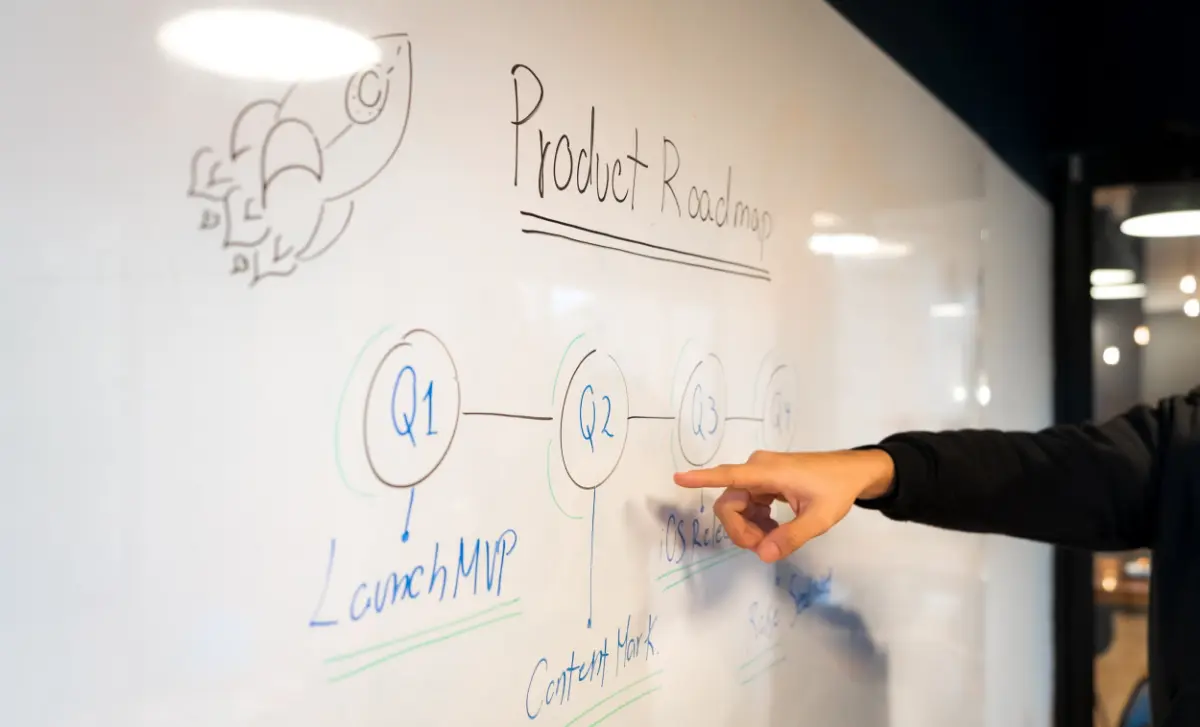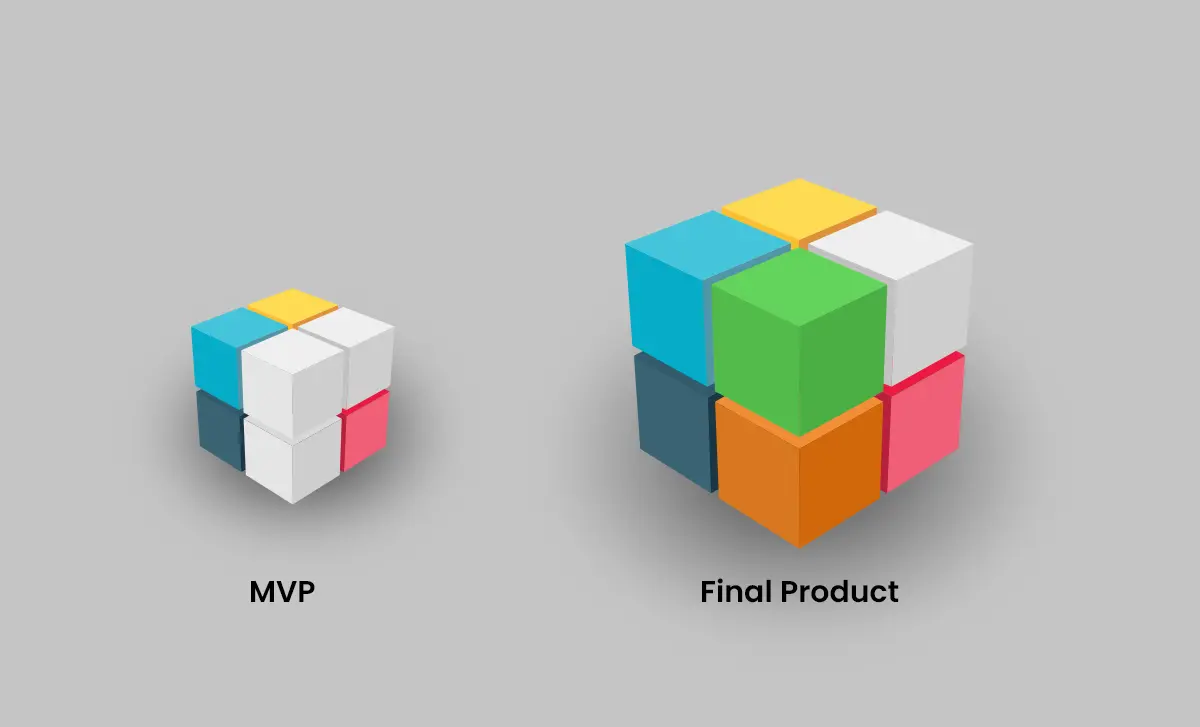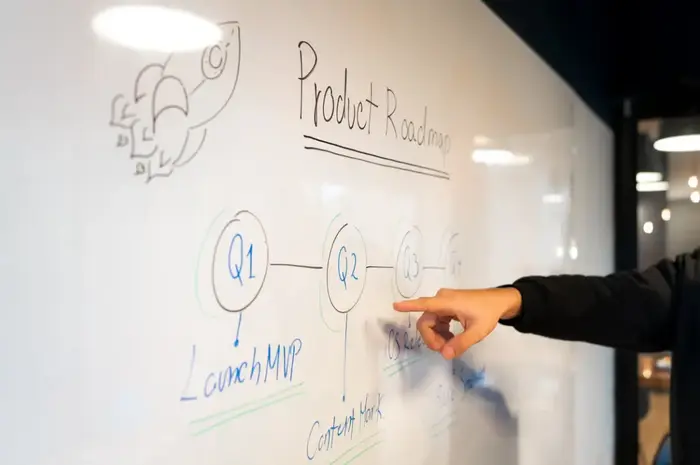Ready to launch a product that solves a real problem of your customers? Wait! Are you sure it has everything to impress your customers? Will it beat your competitors? If you are building a software product merely on assumptions, get ready to taste the failure. Countless product ideas failed due to this reason. An MVP development can save you time, resources, and of course, money. It is like a blueprint for the success of your product. Here is everything about a minimum viable product and why does it matter.

What is a Minimum Viable Product?
An MVP is the simplest version of your final product. It has all the core features to solve the most basic needs of your target audience. Any business that is launching a product for the first time in the market or is not sure whether it would work uses MVP.
Getting a minimum version of your product is like testing the water before you dive into the ocean. It gives you the basic idea of whether it would attract the first customers or not. An MVP is also like a learning tool to gather valuable feedback from the customers before developing a full-fledged product.
Also Read: Are MVP and Prototype Same?
6 Benefits of Developing an MVP For Your Startup
1. Market Validation
Does your product solve a real problem? Is it user-friendly? Which features are more valuable and which ones are unnecessary? MVP is the answer to all these questions without wasting a lot of time and money.
2. Win Stakeholders’ Confidence
Even a great product idea can fail to impress the stakeholders and investors. Reason? It was not tested on the ground reality.
To win their trust and secure your buy-in, you must show that your product can achieve the desired outcomes. An MVP is a cost-effective route to this without making your investors wait for months to get ROI.
3. Reduced Cost
Whether your product is a SaaS software, a web application, or a mobile app; all comes at a big cost. There is a price for hiring developers, launching the product in the store, the cost of marketing, and more.
Investing early is like shooting in the dark. MVP development saves your money ensuring you are heading in the right direction.
4. Right Monetization Strategy
One of the best benefits of MVP is it lets you decide the right monetization strategy. For example, if your app runs on subscription or in-app purchases, MVP lets you test how many users are willing to pay.
If the result is less than your expectations, you need to change the monetization strategy.
5. Faster Product Launch
Chances are your competitors might be building a similar product. Developing an MVP helps you launch the product before they do.
Get early feedback from the customers and improve your product. It means getting early product popularity and a chance to increase the customer base.
6. Early User Base
By quickly releasing a product, you get two major benefits. First, a loyal base of early customers who feel themselves as a major contributor to making your product better.
Secondly, promoting your product becomes easy as the early adopters will spread the positive reviews.
How to Turn Your Minimum Viable Product into Maximum Valuable Product?

Don’t repeat the common MVP mistakes many startups and businesses make. They launch a product with a few features and wonder why it failed.
Your minimum viable product should be a maximum valuable product for your customers and the business. And that depends on how well you understand the stages of MVP development.
Imagine you want to build a fitness tracker mobile app, here is a breakdown of the key steps to take.
1. Ideation and Validation
Idea: You have an idea for a fitness tracker that goes beyond just steps and calories. It will also track sleep patterns and provide personalized recommendations for exercise and diet.
Validation: Through surveys and focus groups with potential users, you discover a strong interest in sleep tracking and personalized recommendations, but many are concerned about cost and battery life.
2. Define Core Features
Based on the validation, focus on the core problem of improving sleep quality. Essential features like sleep duration tracking, sleep cycle analysis (light, deep, REM sleep), and basic sleep quality insights will solve the problem.
Also, focus on building an MVP that does not impact the battery life and is less expensive than other trackers.
3. Design and Development
At this stage, you can hire an MVP development company if your team lacks the technical expertise. They will help you design, develop, and even launch the first version of your fitness tracker in the market.
4. Launch and Gather Feedback
Release the fitness tracker app to a limited group of users with an interest in improving their sleep quality. Gather their feedback and understand how useful the features were.
5. Iterate and Improve
Imagine the feedback reveals your users love the sleep tracking but want more advanced recommendations.
Add features like personalized sleep goals, and integration with smart home devices. You can even partner with sleep specialists for more in-depth recommendations to the users.
This is a simplified example of MVP development of a fitness tracker app. Follow the steps for your original product idea.
Wrapping it Up!
Making a successful product begins with an MVP. But it is not about launching a half-baked product. Building a product that offers real value to the customers is the real deal. By hiring MVP development services, you can double the chances of developing the right product with the right features.



